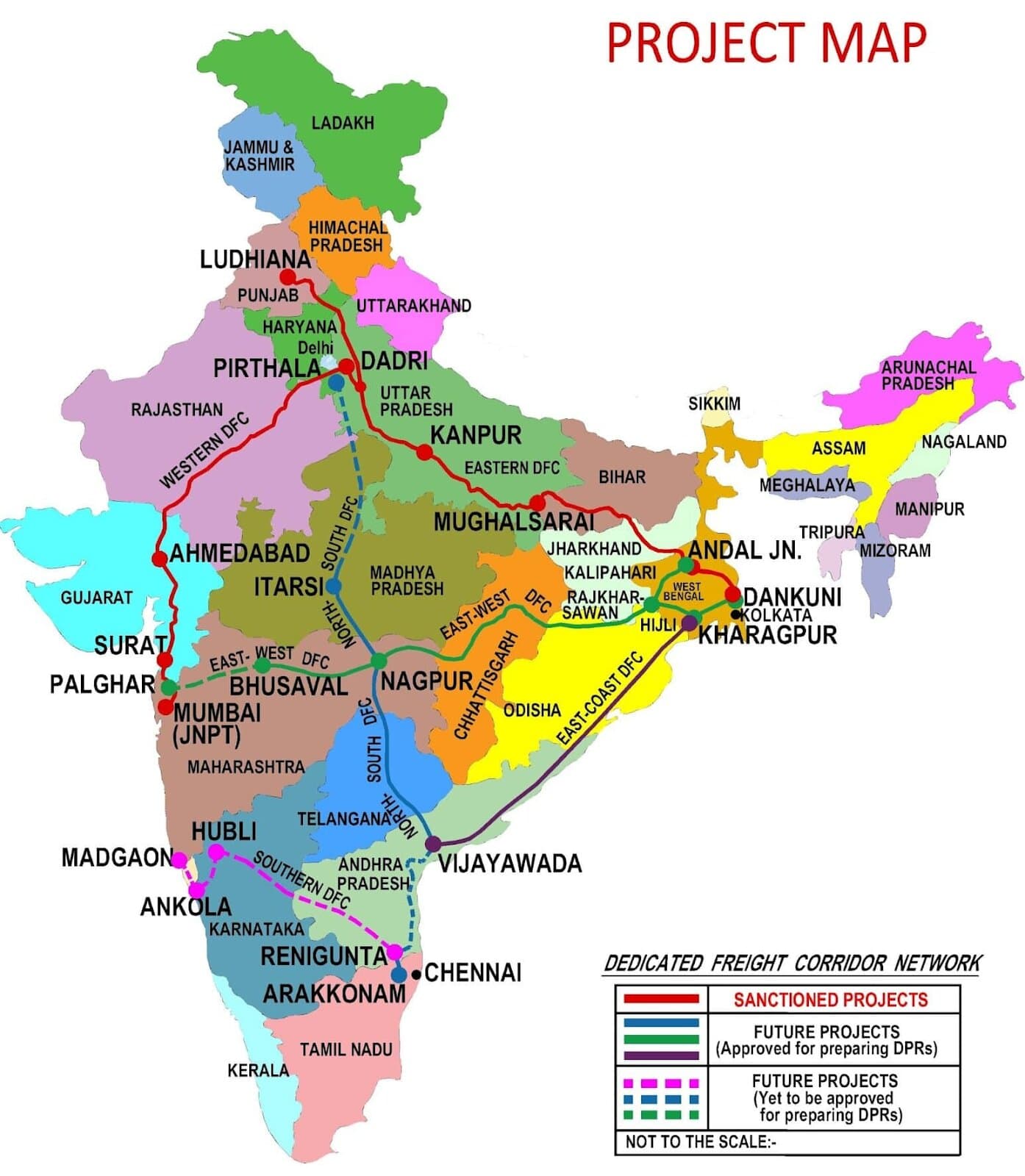Indian Economy
Dedicated Freight Corridor
- 30 Dec 2020
- 4 min read
Why in News
Recently, the Prime Minister of India has inaugurated a 351-km section of the Eastern Dedicated Freight Corridor (EDFC) and an Operation Control Centre (OCC) between Khurja and Bhaupur in Uttar Pradesh.
- EDFC is a 1,839-km project billed as the largest rail infrastructure being built in independent India and has been in the making since 2006.
Key Points
- Dedicated Freight Corridor (DFC):
- It is a high speed and high capacity railway corridor that is exclusively meant for the transportation of freight, or in other words, goods and commodities.
- DFC involves the seamless integration of better infrastructure and state of the art technology.
- DFC consists of two arms:
- Eastern Dedicated Freight Corridor (EDFC):
- It starts at Sahnewal (Ludhiana) in Punjab and ends at Dankuni in West Bengal.
- The EDFC route has coal mines, thermal power plants and industrial cities. Feeder routes are also being made for these.
- The EDFC route covers Punjab, Haryana, Uttar Pradesh, Bihar, Jharkhand and West Bengal
- The World Bank is funding a majority of the EDFC.
- The 351-km-long ‘New Bhaupur-New Khurja section’ will decongest the existing Kanpur-Delhi main line and double the speed of freight trains from 25 kmph to 75 kmph.
- Western Dedicated Freight Corridor (WDFC):
- The other arm is the around 1,500-km WDFC from Dadri in Uttar Pradesh to Jawaharlal Nehru Port Trust in Mumbai, touching all major ports along the way.
- The WDFC covers Haryana, Rajasthan, Gujarat, Maharashtra and Uttar Pradesh.
- It is being funded by the Japan International Cooperation Agency.
- Connecting Link for Eastern and Western Arm: It is under construction between Dadri and Khurja.
- The industrial corridor of Delhi-Mumbai and Amritsar-Kolkata are also being developed around both these DFCs.
- Eastern Dedicated Freight Corridor (EDFC):
- Significance:
- Increased Capacity:
- The DFC shall reform the transportation sector and will create more capacity on trunk routes of Indian Railways as goods trains shall be able to run freely on DFC without any restrictions imposed by movement of passenger trains.
- Decongestion:
- Around 70% of the freight trains currently running on the Indian Railway network are slated to shift to the freight corridors, leaving the paths open for more passenger trains.
- Business Generation:
- Tracks on DFC are designed to carry heavier loads than most of Indian Railways. DFC will get track access charge from the parent Indian Railways, and also generate its own freight business.
- Punctuality:
- The new section means on the Indian Railway main line, more passenger trains can be pumped in and those trains can, in turn, achieve better punctuality.
- Increased Capacity:
- Benefits:
- Logistics costs will be reduced.
- Higher energy efficiency.
- Faster movement of goods.
- It is environmentally friendly.
- It will provide ease of doing business.
- Helps in generating more employment.
Dedicated Freight Corridor Corporation of India Ltd.
- DFCCIL under the Ministry of Railways is a special purpose vehicle tasked with planning and completion of 3,306 kms of DFCs.
- It is headquartered in New Delhi and is a Public Sector Undertaking (PSU).
- It engages in the planning and development, deployment of monetary resources, building, upkeep, and the operation of the DFCs.





